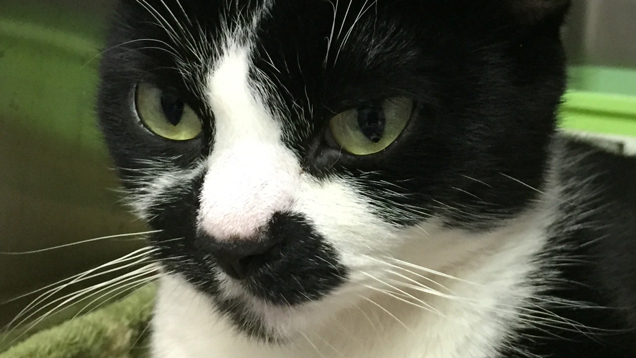No-kill status achieved for London municipal shelters
 CREDIT: LONDON ANIMAL CARE CENTRE
CREDIT: LONDON ANIMAL CARE CENTREThanks to partnerships in the community and across the country, the City of London was able to reach no-kill goal for their municipal animal shelters for 2015. Pinkie, seen here, is just one of the cats who will soon be available for adoption from LACC.
The City of London reached the goal of becoming a no-kill, pro-adoption city, one-and-a-half years ahead of schedule.
Orest Katolyk, the chief municipal law enforcement officer commented on this objective.
“We have been given direction from city council a couple years ago to make London a no-kill pro adoption city. We have met this objective as of 2015. No-kill means that 90 per cent of the animals that enter the shelter will exit the shelter either for adoption or to go to other shelters.”
In 2013, the community and the Protective Services Committee voted in favour of London becoming a no-kill city within three years.
Katolyk is happy to announce that no animals were euthanized in 2015 at the London Animal Care Centre (LACC) due to lack of space.
This no-kill objective is part of a larger strategic plan, detailed on the LACC’s website.
Described in this plan is a vision for London to be “a city where all pets have a caring, respective and responsible home.”
In this strategic plan there are three key initiatives that would work to decrease the amount of animals that are euthanized.
These three initiatives include increasing the amount of animals at the pound that get reclaimed by their owners, decreasing the amount of animals admitted to the shelter, and increasing the amount of animals adopted to new owners.
All programs within the plan were chosen to work towards these three initiatives.
This strategic plan was prepared by Katolyk, who mentions that this goal could not have been reached if it wasn’t for the partnerships fostered with shelters within the city, across the province and with other provinces.
Judy Foster, the executive director of the London Humane Society spoke about their successful partnership with LACC, which is also referred to as London Animal Control.
“The London Humane Society is delighted that London Animal Control has met its objective. We have been accepting cat transfers from London Animal Control for some time and we are happy to assist them to adopt cats out that need homes, [animals] that need a second chance.”
The London Humane Society has had a longstanding policy to never euthanize for space and it was in part due to their successful collaboration with the LACC that helped the LACC achieve their no-kill goal for 2015.
Organizations such as the London Humane society and LACC are able to function as “no-kill” shelters due to the support of the community of London.
The community of London can continue to support these great organizations by donating time, supplies, as well as giving animals the second chance they deserve by adopting.
Foster has great advice for anyone thinking of adopting for the first time.
“If people are considering adopting and are uncertain about the process, we will explain it to you. We do go through a process here so that when people are adopting they are educated about what is involved and what the pet is going to require. We do everything that we can to make sure that both the pet and the new pet owner are set up for success.”
For more information about adopting a pet feel free to visit the London Humane Society’s website at londonhumanesociety.ca/adopt or the London Animal Care Center accpets.ca/adoption














